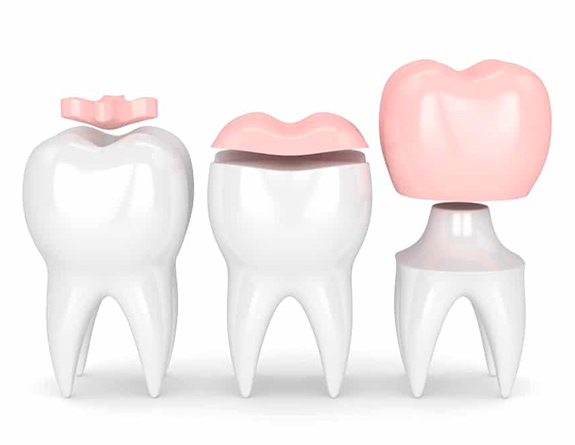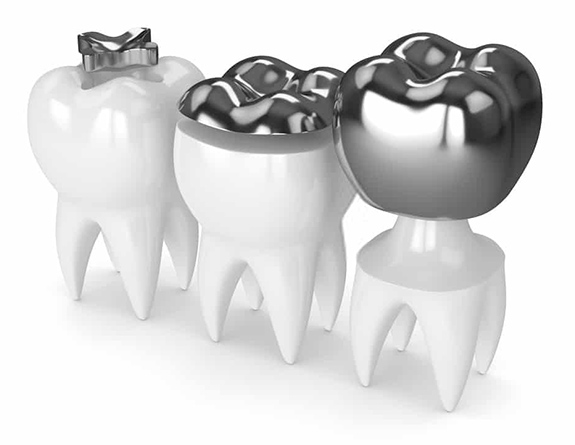When a tooth has been destroyed from moderate to extensive decay, previous drilling, or fracture, but still has sufficient enamel remaining, one innovative way it can be restored is with porcelain inlays or onlays. An inlay is a restoration in which a portion of the occlusal (biting) surface is replaced with porcelain. An onlay will restore a larger portion of the biting surface of the tooth. These are considered very conservative restorations. The porcelain allows an excellent esthetic result. It is attached to the tooth using a bonding procedure, allowing it to become very strong. It can be used with wonderful results in small, medium, and even large restorations lasting more than 12 years, relatively trouble-free.
Advantages include improved appearance, high strength, longevity, and conservative preparation, that is less drilling than a crown. If the porcelain chips, it can be repaired. However, you should not chew ice cubes, “jaw breakers,” or any other hard candy with any of these types of restoration.



Resin inlays and onlays are used in the same areas as the porcelain inlays and onlays. They are very natural in appearance and like porcelain, are bonded into place. They too are considered a conservative restoration. Two appointments, approximately 2 weeks apart, are required to fabricate the resin inlay/onlay. The tooth will be protected with a temporary filling while the final restoration is being made. The wear and tear of the resin is similar to that of enamel. So unlike porcelain, it will not have a tendency to wear the opposing natural tooth structure.
Unless you have a preference, we will select the most appropriate material for your dental needs. The cost of each is comparable. Both types are excellent choices and are considered highly conservative in the amount of drilling needed.


